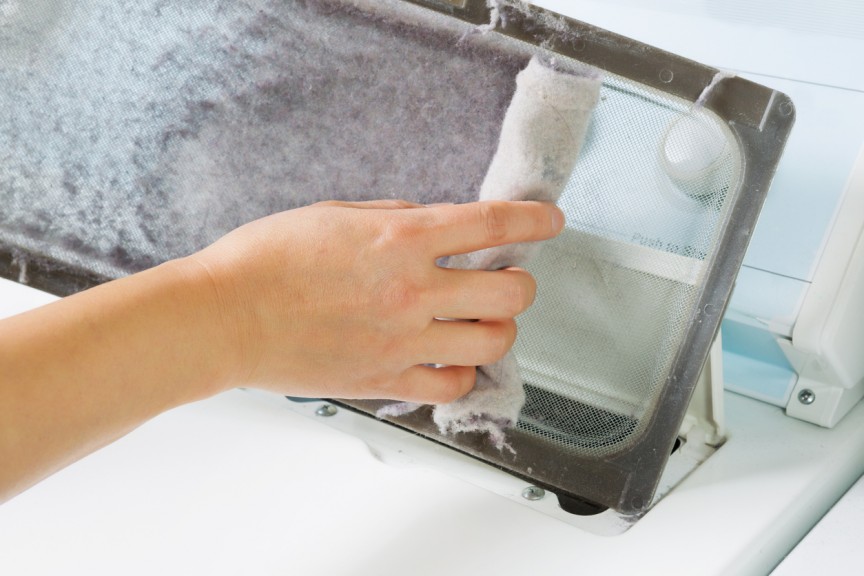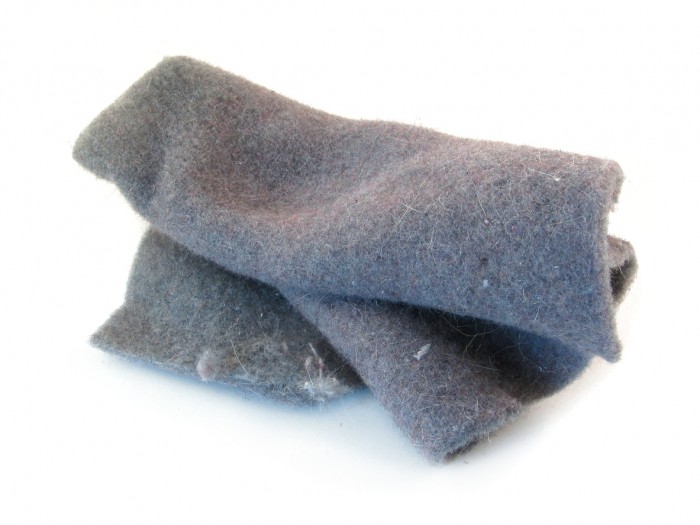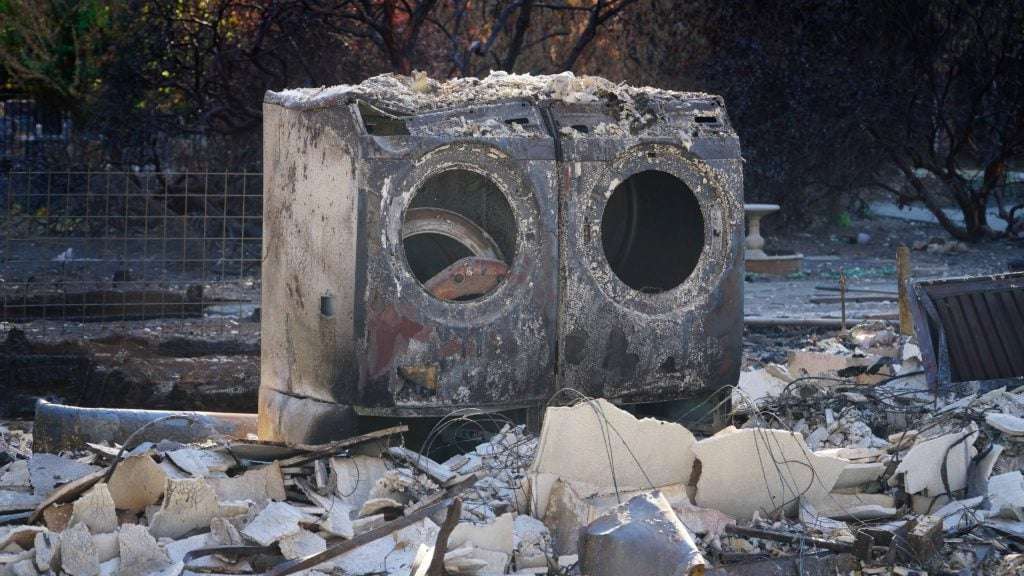Last Updated: 10/19/2021
As a responsible homeowner, you know that it’s important to clean the dryer’s lint trap before or after every load to ensure that it doesn’t build up too thick. Most of us had this rule drilled into our parents’ minds as we became old enough to do our laundry, though some people learn the hard way that forgetting to clean the lint trap can lead to damp clothes at best and a dryer fire in the worst of scenarios.
The fact of the matter is that our dryers produce a lot of clean lint made up mostly of tiny scraps of thread and fluff that has come off of the drying clothing. The lint trap does its best to pull these bits off the clothes themselves so that we can wear them freshly clean without worrying about a lint roller, but some of us can’t help but wonder… is there something better to do with all that lint? Every time you clear the trap, you come away with a decent-sized handful of clean cloth fluff, and we can usually see what seems to be a ton more hiding in the trap housing and the vent.
If you’ve been thinking that there’s got to be a better way than simply sending all this clean fluff to the landfill, you’re right. Dryer lint is one of the most reusable substances in the home, and every family creates enough of it to get surprisingly crafty. Not sure where to start? Try one of our ten fun and creative ways to put that lint to good use.
Cozy Pet Bedding
If you keep hamsters, guinea pigs, gerbils, or any number of similar creatures that might live in a terrarium or custom hamster cage, then you already have a quick and easy way to retask a great deal of monthly dryer lint. Normally, you would have to buy things like pine shavings for your rodent friends to burrow, nest, sleep, and occasionally soil. Dryer lint is not only softer than pine shavings, but it’s also completely free. That said, if you’re using your lint to bed down an animal, it’s best if you use natural detergents and stay away from fabric softener and scents as some creatures can be quite sensitive.
Dry Compost Fiber
Have a compost pile? Composting is one of the best possible ways to use otherwise useless things, like carrot stems, apple cores, and eggshells. It’s not common knowledge, but natural fibers like cotton or wool can also be composted, especially when dispersed into small, easy to absorb pieces of lint like what is produced by your dryer. Naturally, dryer lint counts as ‘dry’ or ‘brown’ when doing your composting calculations as it won’t rot and doesn’t bring any inherent moisture to the mix. That said, this is the one form of lint re-use that doesn’t require you to watch out for human and pet hairs, as they can be safely composted but might not be great for handicrafts.
Soft Stuffing for Handicrafts
If you make dolls, stuffed animals, or dog toys by hand at home or are considering doing so, dryer lint makes a fantastic source of soft and infinitely free stuffing. Dryer lint stuffed dolls and toys can easily be considered safer than commercial items because they’re not full of chemically created polyester fibers or other unnatural types of cheap industrial stuffing. If you’re not into smaller detail items, you can also use dryer lint to stuff throw pillows or even stuff a homemade comforter with some.
Re-Spin It Into Yarn
If you already know how to spin fiber into yarn or are looking to teach yourself shortly, there’s no need to go out and buy unspun wool or cotton to get started; instead, work with your dryer lint, which is, in essence, a bunch of tiny pieces of thread or thread fiber already. Once you have spun the dryer lint, you can start making any yarn or thread crafts you please. You can even make strands of different colors by washing color-separated loads and collecting the colored lint after each round. For a large multi-colored supply, clear out the lint trap housing and vent for extra lint to work with.
Moldable Paper Mache Pulp
Almost everyone has paper mache at least once in their life by mixing glue, water, newspaper strips, and whatever your frame is. Of course, the newspaper is flat and somewhat unwieldy once dipped in the glue and water mixture. Instead, consider making a slight fluffer and more moldable paper mache project using dryer lint mixed with glue and water instead. Just be sure to work on something like a tarp and have a clean-up plan prepared because this project may be fun, but it will get messy.
QuickFire Starters
Dryer lint, by nature, is soft, dry, and incredibly flammable. While you will go out of your way to prevent a lint fire inside your dryer, it’s hard to beat a dryer lint fire starter: if you like to camp or even go on the occasional trip with the family, there are tons of ways to do it. You can wrap dryer lint in twists of wax paper, stuff a bit of dryer lint into the bottom of a toilet paper roll, or even put balls of lint into paper egg cartons, pour wax over the lint, then cut off a carton section as-needed. All of these solutions should fire quickly and help you create a steady flame to light the larger pieces of wood in your fire. Make sure you keep the fires outside – or this could be you:
Natural Anti-Weed Garden Treatment
Dryer lint is not particularly right in nutrients for your garden, but it can form an interesting barrier against either erosion or weeds; worked into sections of soil that you don’t want to grow, the lint will form a protective layer that can prevent weed seeds from taking root and will choke out anything beneath the lint layer. Because it’s biodegradable, the lint will eventually fade into a harmless addition to the soil. Still, it’s also great to hold your yard together at the edges and keep the weeds at bay between your flowers, fresh herbs, or vegetables.
Handmade Recycled Stationary
Have you ever made paper before with a square of wire mesh and a pan of paper scraps? Now’s your chance to make an even softer homemade stationary with the help of dryer lint. Blend the lint with warm water to create a pre-paper slurry, and add a little food coloring if you want to. Then sift the smooth slurry through the mesh until you have an even layer. Please leave it to dry for a day, press any extra moisture out gently with a rag, and carefully remove the mesh’s fabric stationary. Lay the paper somewhere flat to finish drying.
Free Packing Material
Our final tip is a quick one. If you’ve ever had to mail something delicate, finding the right packing material in a normal home is surprisingly difficult. You don’t normally carry bubble wrap, packing peanuts, or plastic pillows, and they’re pretty expensive to stock up on. Dryer lint, on the other hand, is nearly infinite, free, and quite soft. Especially for smaller items, it makes a great material for packing and shipping.
Thanks for joining us on this adventure into the wild world of reused dryer lint. With this many options and surely a few more you can think of, there’s never a reason to throw out that dryer lint again. You might as well start stocking up for your stationery, stuffed doll, or composting projects in the future!
If you have any questions or new innovations to lint recycling, please contact us!

About the Author
Jen is your go-to guru for crafting a cozy, green cocoon. 🪴 Her dive into sustainable building wasn’t just about saving the planet—it started as a mission to make family movie nights eco-friendly (and to ensure the popcorn was the only thing getting heated!). With a knack for breaking down the jargon, Jen turns eco-lingo into everyday language. Swing by the Green Living blog for a mix of earth-loving advice and home improvement hacks. Whether you’re just dipping your toes into green waters or you’ve been swimming in the deep end of DIY projects, Jen’s here to guide, giggle, and remind you that every eco-choice is a step towards a planet that thanks you… and maybe even sends a rainbow your way! 🌈



